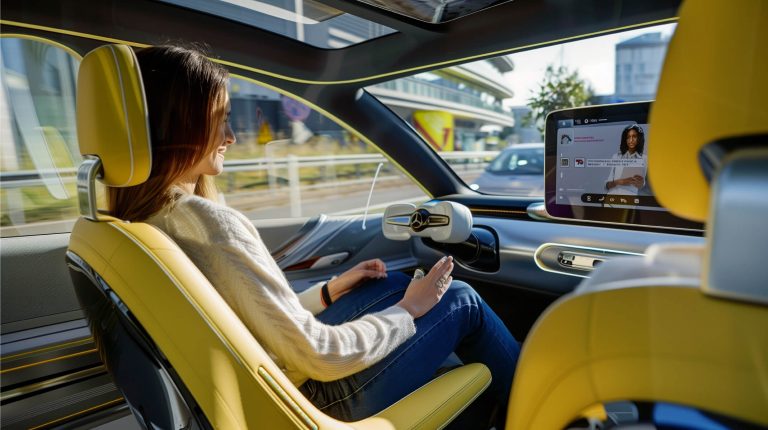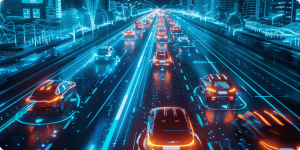San Francisco alone already has more than 600 autonomous cabs. There are also such cars operating in Austin and Los Angeles. Companies like Waymo (Google), Tesla, Cruise (General Motors) and Uber have led the charge, investing billions in developing cars that can navigate the complexities of real-world driving without human intervention.
Waymo: Pioneering AVs in Urban and Suburban Settings
Waymo, a subsidiary of Alphabet Inc., has become synonymous with the advancement of autonomous driving technology. Starting as the Google Self-Driving Car Project, Waymo has since conducted millions of miles of testing on public roads across various cities in the United States. A landmark achievement for Waymo was the launch of Waymo One, a fully autonomous ride-hailing service in Phoenix, Arizona, marking a significant step toward commercializing AV technology. The company recently received approval for a major expansion of its San Francisco and LA taxi cab fleet.
Key Statistics
- Over 20 million miles driven on public roads and over 10 billion in simulation.
- Reduction in safety-related incidents over time, showcasing continuous improvement in technology
Economic Impacts
The advent of autonomous cabs holds significant economic implications, both positive and negative. For companies operating in the transportation sector, the transition to autonomous vehicles represents an opportunity for substantial cost savings. The elimination of driver salaries—a major component of operational costs—coupled with increased efficiency and potentially lower maintenance costs due to the precision of machine operation, presents a compelling economic case.
For every dollar earned, cab apps pay 75 cents to the driver. This is the main reason for the large investment in the development of AVs (autonomous vehicles). Studies forecast the global autonomous car market to exceed $110 billion by 2030, with compound annual growth rates showcasing the rapid adoption of AV technology.
However, the shift towards autonomous vehicles is not without its drawbacks, particularly in terms of employment. The driving profession, encompassing millions of jobs worldwide—from taxi drivers to truckers—faces a stark future where automation could render such roles obsolete. The economic ripple effects of such job losses could be profound, impacting not only individuals but also communities that rely heavily on driving jobs for their economic livelihood.
Social Implications
The social implications of autonomous cabs are as varied as they are significant. One of the most promising aspects of autonomous vehicle technology is its potential to improve accessibility. For the elderly, disabled, and those unable to drive due to various reasons, autonomous cabs could offer newfound mobility and independence, significantly enhancing their quality of life.
Public acceptance and trust, however, remain considerable hurdles. The idea of surrendering control to a machine raises not just safety concerns but also questions about the loss of the personal freedom associated with driving. Additionally, the ethical considerations of autonomous vehicle decision-making in critical situations—such as the classic “trolley problem” where a vehicle must choose between two harmful outcomes—continue to provoke debate.
Autonomous vehicle technology is not without its limitations. Challenges such as interpreting the unpredictable behavior of human drivers and pedestrians, dealing with adverse weather conditions, and navigating complex urban environments remain significant hurdles.
Furthermore, while autonomous vehicles have the potential to reduce accidents caused by human error, their safety record is under constant scrutiny. Technology is still too unsafe, as proven twice in 2023. First, an autonomous car from the company Cruise crashed into a fire truck. A few months later, a robotaxi from the same company hit a pedestrian.
Legal and Regulatory Considerations
The legal and regulatory landscape for autonomous cabs is complex and evolving. As these vehicles move from testing to mainstream use, governments and regulatory bodies face the challenge of establishing frameworks that ensure safety while fostering innovation. For instance, the U.S. National Highway Traffic Safety Administration (NHTSA) has been actively working on guidelines that define safety standards and responsibilities for autonomous vehicles. However, the variation in regulations from one jurisdiction to another complicates compliance for companies operating in multiple areas.
A pivotal aspect of legal consideration is liability in the event of an accident involving an autonomous cab. Traditional notions of driver responsibility are upended when the ‘driver’ is an algorithm. The legal system must adapt to address whether the manufacturer, the software developer, or perhaps even the passenger bears responsibility under different circumstances. The first case in this context is the 2018 incident involving an Uber autonomous test vehicle that resulted in a pedestrian’s death. This tragic event highlighted not just safety concerns but also the urgent need for clear legal frameworks regarding accountability and insurance for autonomous vehicles. Administration (NHTSA) has been actively working on guidelines that define safety standards and responsibilities for autonomous vehicles. However, the variation in regulations from one jurisdiction to another complicates compliance for companies operating in multiple areas.
Internationally, countries like Germany and Singapore have been pioneers in creating legal frameworks that accommodate autonomous vehicles. Germany, for example, passed a law in 2017 allowing driverless cars on public roads, stipulating that a human driver must be ready to take control if needed. These examples underscore the global effort to balance innovation with safety and ethical considerations.
Comparing Autonomous Cabs with Human Drivers
When comparing autonomous cabs with human drivers, it’s crucial to consider the advantages and limitations of both. Autonomous vehicles offer the promise of safer roads, as they are not susceptible to human errors caused by distractions, fatigue, or impairment. They can operate 24/7, potentially reducing the need for personal vehicles and, by extension, traffic congestion and environmental impact.
However, human drivers possess the ability to make nuanced decisions based on social cues, experience, and ethical considerations in unpredictable situations. For example, a human driver might anticipate a child running into the street after a ball in a way that a machine could not. Furthermore, the human element in driving facilitates personal interactions, such as a taxi driver helping an elderly passenger with their groceries or navigating through complex traffic situations based on local knowledge.
Also, recent MIT studies have proven that additional electronics significantly increase the car’s energy consumption compared to if the electric car was driven by a human.
The future of autonomous cabs will likely involve a blend of technological innovation and human oversight. Regulatory frameworks and legal precedents will evolve to address the challenges posed by this new paradigm, ensuring that the integration of autonomous vehicles into society enhances safety, efficiency, and accessibility while addressing ethical and employment concerns.
FAQ
Will autonomous taxis be affordable for everyday use?
Initially, the cost of using autonomous cabs might be higher due to the advanced technology and investment required. However, as the technology becomes more widespread and production scales up, prices are expected to decrease, making autonomous cabs an affordable option for many people.
Can autonomous cars operate in all weather conditions?
Current autonomous vehicles can struggle with extreme weather conditions, such as heavy snow or torrential rain, which can interfere with sensor functionality. Continuous advancements are being made to improve their performance in all conditions, but human intervention is still necessary in some scenarios.
How are autonomous cabs regulated?
United States
The U.S. has taken a somewhat decentralized approach to AV regulation, with states having the autonomy to set their own rules and guidelines. This has led to a mosaic of regulations, creating both opportunities for innovation and challenges in terms of interoperability and standardization across state lines.
European Union
The EU is working towards harmonizing AV regulations across its member states, focusing on safety, privacy, and liability issues. The EU’s approach aims to create a unified market for AV technologies, facilitating smoother development and deployment processes.
China
China has aggressively pursued AV technology, implementing comprehensive national strategies that include both technological development and regulatory frameworks. China’s approach emphasizes rapid deployment and large-scale testing, aiming to become a global leader in the AV industry.

































